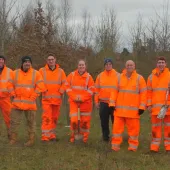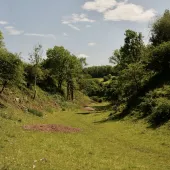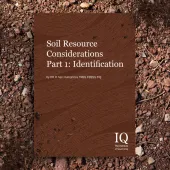Quarry restoration projects RESTORE biodiversity

International conservation partners see nature returning at quarries in Cambridgeshire and Bedfordshire
INTERNATIONAL partners in the RESTORE Project – a European quarry-restoration initiative led by the RSPB – highlighted the vital role international co-operation and industry partnerships play in conserving wildlife, during a recent visit to quarries being restored for nature in Cambridgeshire and Bedfordshire.
Representatives of seven organizations working with a wide variety of stakeholders to restore worked-out sites in the Netherlands, Belgium, Germany and the UK, visited Hanson-RSPB Ouse Fen Nature Reserve, in Cambridgeshire, and Sandy Heath Quarry, in Bedfordshire, where mineral companies working with the RSPB are successfully restoring the sites for wildlife.
RESTORE project co-ordinator Bea Ayling said: ‘Bringing organizations together to share knowledge and expertise across national borders really is essential if we are to make the most of the opportunities for biodiversity restoration presented by the mineral extraction industry across north-west Europe.’
Quarries cover an area of more than 250,000ha in north-west Europe, and after they reach the end of their working lives, their restoration can contribute significantly to restoring lost biodiversity, as well as providing essential eco-system services, such as flood-risk alleviation. They can also have enhanced recreational potential for local communities, becoming places where people can connect with and enjoy nature on their doorsteps.
At Ouse Fen, the RSPB and Hanson are 10 years into a 30-year project to progressively restore 700ha of working sand and gravel quarry to wetland and grassland habitats, following extraction. When complete, the site will contain the largest reed bed in the UK, and it has already been colonized by the elusive bittern, with six females nesting there in 2014.
Meanwhile, a partnership between the RSPB and Lafarge Tarmac has seen the restoration of 15ha of heathland at Sandy Heath, on Bedfordshire’s Greensand Ridge, following the extraction of sand at the site. It is projected that there will be approximately 30 ha of heathland habitat created at the site in the next 10 to 20 years.
The resulting area of heathland – a national priority habitat – is an important site for a variety of rare wildlife, including a wide range of endangered invertebrates, such as the spider-eating wasp, recorded for the first time ever in England in 2012. In time, the creation of such habitat at this quarry may attract the likes of the nightjar – another heathland-loving species.
‘Creating high biodiversity value habitats like those at Ouse Fen and Sandy Heath through the appropriate and sustainable restoration of minerals sites for nature is one of the surest ways to enhance biodiversity on a truly landscape scale, helping to extend and link existing wildlife sites and reconnect people with nature,’ said Nigel Symes, head of the RSPB’s Business Advice Unit and RESTORE project manager.
RESTORE, which is funded through the EU’s INTERREG IVB programme, aims to promote a reference point for organizations across north-west Europe to achieve this aim. The success of work at Ouse Fen and Sandy Heath is helping to establish best-practice models which can be followed at other sites both in the UK and on the continent.









